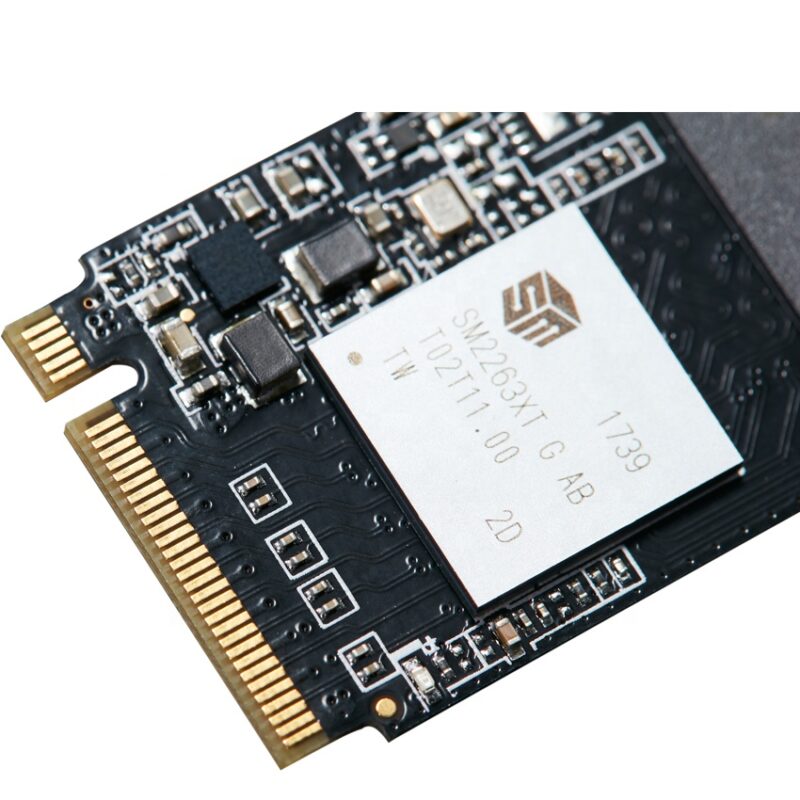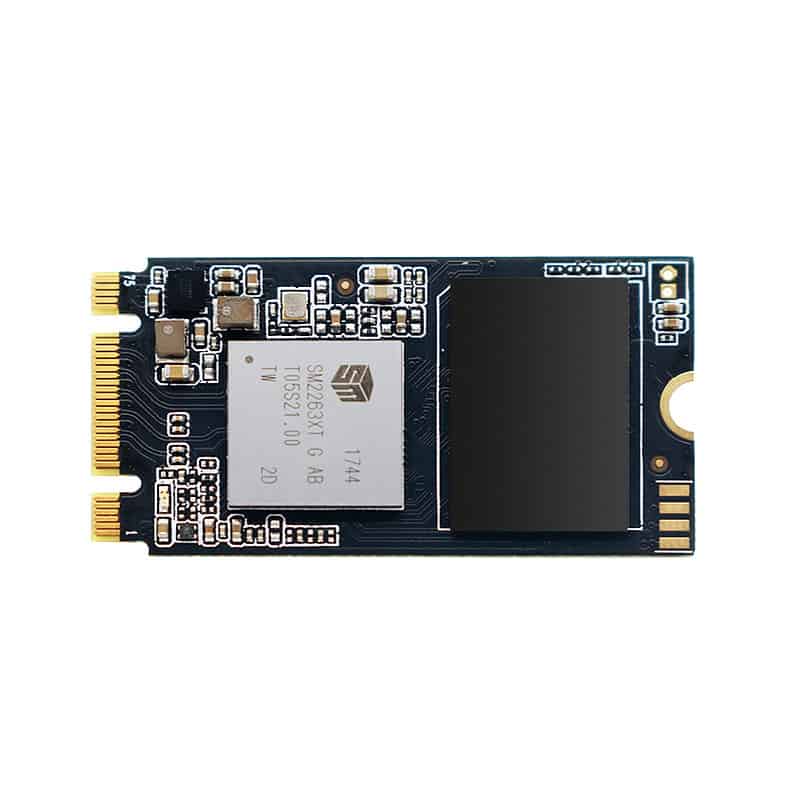I think many people are DIY computer enthusiasts (Common Myths in PC building), such as reinstalling the system themselves, adding memory, adding hard drives, etc., as long as they understand the most basic maintenance knowledge, they can handle it. However, when it comes to laptops, many people need to add solid-state drives (SSDs), which requires great caution for non-professionals. If your SSD interface type is different, it may cause problems such as installation failure inability to start, and so on. Today, I especially took the time to explain to everyone that when adding an SSD to a computer, you need to confirm the interface type supported by the motherboard. This can effectively reduce the time and improve performance in one go.
Before understanding SSD interfaces, we must first grasp the interface protocols, which greatly help us in future hard drive upgrades. This way, everyone can choose a suitable hard drive for themselves, allowing you to get everything done in one go. Currently, the two most mainstream transmission protocols for SSDs are the traditional AHCI protocol and the new NVMe protocol designed specifically for SSDs. The NVMe protocol brings a revolutionary improvement compared to AHCI, greatly enhancing the read and write performance of SSDs, reducing the high latency caused by AHCI interfaces, and completely unleashing the ultimate performance of SSDs in the SATA era. However, due to price factors, the AHCI protocol is still dominant in the SSD market, while the NVMe protocol is accelerating its erosion of market share from high-end consumers to mainstream levels.

M.2 2230/2242/2280 NVMe PCIe Gen3 SSD #
Upgrade to the future of storage technology with our M.2 2230/2242/2280 NVMe PCIe Gen3 SSD. Experience lightning-fast data transfers, versatile compatibility, and reliable data storage. Enhance your productivity and enjoy reduced load times with this high-performance NVMe SSD. Buy now and unleash the true potential of your device.
- Interface: PCIe Gen3
- Flash Type: MLC | TLC | QLC
- Capacity: 60GB | 120GB | 480GB | 1TB | 2TB
- MOQ: Negotiable
- ODM/OEM Service Available
▶ How do I know if my computer supports the AHCI protocol or the NVMe protocol? #
For desktop computers, currently, mainstream motherboards that natively support the NVMe protocol for Intel include the 100, 200, and 300 series motherboards, as well as X99/Z97, and so on. For AMD, any motherboard from the 300 series and above that supports Ryzen processors can generally support NVMe. Motherboards that support NVMe also support the AHCI protocol, but it’s essential to understand that supporting AHCI doesn’t necessarily mean they can support NVMe. This is a crucial distinction to be aware of. Regarding laptops, many mid-range to high-end laptops have already adopted NVMe protocol SSDs, while most computers before 2016 primarily used AHCI protocol SSDs, although some high-end machines may have employed NVMe protocol SSDs.
▶ The AHCI protocol is commonly found on interfaces such as SATA, mSATA, and M.2 (also known as NGFF) interfaces #
1. SATA Interface
From the launch of SATA1.0 in 2001 until now, the most significant interface for solid-state drives is SATA3.0. SATA interface solid-state drives are mainly used to replace mechanical hard drives, and we primarily use this type of interface for upgrading our desktops and laptops. SATA interface solid-state drives are characterized by their affordability and good heat dissipation, as well as strong compatibility, whether it is for desktops or laptops. The drawback is that they occupy relatively large space, especially for laptop users who need to replace the original mechanical hard drive or choose to remove the optical drive. There are trade-offs, as shown in the image below, which illustrate the types of SATA interfaces.
2. mSATA Interface
mSATA interface solid-state drives generally refer to ultra-compact SSD modules. Unlike traditional 2.5-inch SSD products, they are designed in a form factor similar to embedded system DOM (Disk-on-Module). The dimensions of mSATA SSDs are 50mm x 30mm, with a single-side thickness of 4mm to 5mm. Their volume is 1/12th that of traditional 2.5-inch SSDs, and they weigh 1/7th as much, as illustrated in the image below:

mSATA SATA3 Solid State Drive #
Experience lightning-fast performance and enhanced data security with our mSATA SATA3 SSD. Upgrade your storage with ample capacity and say goodbye to lags and data loss. Get yours now and enjoy 300% faster computing!
- Interface: SATA3 (SATA 6Gb/s)
- Nand Flash: SLC | MLC | TLC | QLC
- Capacity: 16GB | 32GB | 60GB | 120GB | 480GB | 1TB | 2TB
- MOQ: Negotiable
- ODM/OEM Service Available
3. M.2 Interface (NGFF interface)
The M.2 interface, also known as the NGFF (Next Generation Form Factor) interface, is currently the most commonly used interface type for SSDs in laptops. It has a width dimension of only 22mm. When NAND chips are placed on one side, the thickness is 2.75mm, and for double-sided configurations, it’s 3.85mm. Compared to mSATA, the M.2 interface further reduces volume, saving space. Unlike the SATA3 interface, the M.2 interface can use PCIe 3.0 for data transmission, significantly increasing speed. There are three main M.2 interface standards: 42mm, 60mm, and 80mm, with 42mm and 80mm being the most common for consumer-level usage.
M.2 SSDs have the advantage of occupying less space, but they tend to be more expensive than SATA interface SSDs, and their heat dissipation might not be as efficient. Additionally, some older motherboards lack M.2 interfaces, so when upgrading, it’s crucial to ensure compatibility with the motherboard. Choosing the wrong interface can result in the inability to install the SSD.

M.2 NGFF 2230/2242/2280 SATA SSD #
Upgrade to the future of storage technology with our M.2 NGFF 2230/2242/2280 SATA SSD. Experience lightning-fast data transfers, versatile compatibility, and reliable data storage. Upgrade your device with this high-performance M.2 SATA SSD for an exceptional computing experience. Buy now and elevate your system’s capabilities.
- Interface: SATA
- Flash Type: MLC | TLC | QLC
- Capacity: 60GB | 120GB | 480GB | 1TB | 2TB
- MOQ: Negotiable
- ODM/OEM Service Available
▶ NVMe Protocol: The most common interfaces for NVMe are M.2 and PCIe #
1. M.2 Interface
The M.2 interface offers two customizations: Socket2 and Socket3. The former supports SSDs, WWAN, and other non-storage devices with SATA and PCIe x2 interfaces. Socket3, on the other hand, is designed for high-performance storage, supporting PCIe x4 interfaces. It is smaller in size while providing a high bandwidth of up to 32Gbps. It’s important to note that the M.2 interface mentioned earlier using the AHCI protocol corresponds to Socket2, whereas the M.2 interface SSDs mentioned below that utilize the NVMe (PCIe vs. NVMe: Unveilling the differences) protocol are of the Socket3 type.
The advantages of Socket3-based SSDs include their high speed and compact form factor. However, they tend to be more expensive, generate relatively more heat, and may have slightly lower compatibility compared to SATA-based SSDs.

M.2 2230/2242/2280 NVMe PCIe Gen3 SSD #
Upgrade to the future of storage technology with our M.2 2230/2242/2280 NVMe PCIe Gen3 SSD. Experience lightning-fast data transfers, versatile compatibility, and reliable data storage. Enhance your productivity and enjoy reduced load times with this high-performance NVMe SSD. Buy now and unleash the true potential of your device.
- Interface: PCIe Gen3
- Flash Type: MLC | TLC | QLC
- Capacity: 60GB | 120GB | 480GB | 1TB | 2TB
- MOQ: Negotiable
- ODM/OEM Service Available
2. PCI-E Interface
PCIe (Peripheral Component Interconnect Express) is, in fact, a channel protocol. In terms of physical representation, it refers to the PCIe interfaces on the motherboard. These channel protocols are part of the bus protocol family and can directly connect to the CPU. As a result, they have minimal latency, making PCIe an excellent companion for the NVMe standard.
▶ Now that we have an understanding of SSD protocols, how should one choose the appropriate SSD for their laptop? #
- Like many laptops, opening the back cover of the Acer E5-575G reveals a reserved M.2 slot located next to the memory slots. It can accommodate M.2 SSDs of three different lengths: 2242, 2260, and 2280.
- However, the E5-575G comes with only the standard M.2 SATA models. The official information does not explicitly state support for M.2 NVMe SSDs. This is a common issue with many laptop models, not just this brand and model. Manufacturers often do not specify this detail because it may not be crucial for the average consumer. Still, it is essential for technical users, as the purchased SSD must be compatible. Therefore, it’s crucial to understand this before purchasing an SSD.
- The lack of clear compatibility information can hinder users from enjoying the higher performance of NVMe SSDs. Many people, to ensure compatibility, end up choosing standard M.2 SATA SSDs, which, while functional, leave some performance potential untapped.
- Whether a laptop can support an M.2 NVMe SSD is determined during the hardware design phase. To determine if your laptop supports NVMe SSDs without physically opening it, you can use software like HWiNFO64 for testing.
- HWiNFO offers robust functionality. In this case, we are not using its CPU and system status monitoring. After closing the System Summary window, navigate to the “Bus” section on the left. Expand the items ending with “PCH – PCI Express Root Port #.” If there is no device connected as shown in the image labeled #1, it indicates an idle interface, potentially corresponding to an M.2 slot. The selected item in the image represents an unused PCIe interface in the Acer E5-575G, providing a 3.0 x2 bandwidth. When the “Current Link Width” displays “Not negotiated,” it means the interface is idle, and this usually confirms that the laptop’s M.2 slot can support a PCIe NVMe SSD.
- In the case of this scenario, the laptop model can indeed install an NVMe SSD, which is excellent news. However, it supports a maximum of PCIe 3.0 x2 bandwidth, meaning that a standard M.2 NVMe SSD will only utilize half of its sustained read/write performance. This might not be the most cost-effective choice. An alternative is the Toshiba RC100, a single-chip SSD with native PCIe 3.0 x2 interface, which does not suffer a loss in sustained read/write performance when installed.
- Using an NVMe SSD can approximately double the overall performance compared to a standard SATA interface. You can use relevant software to test this. With the method described above, you don’t need to worry about purchasing the wrong SSD and facing compatibility issues.
This article aims to provide helpful information to readers. Feel free to follow: www.szyunze.com for more tech-related content, and please consider sharing this with your friends and colleagues if you found it useful.
Related Reading:






